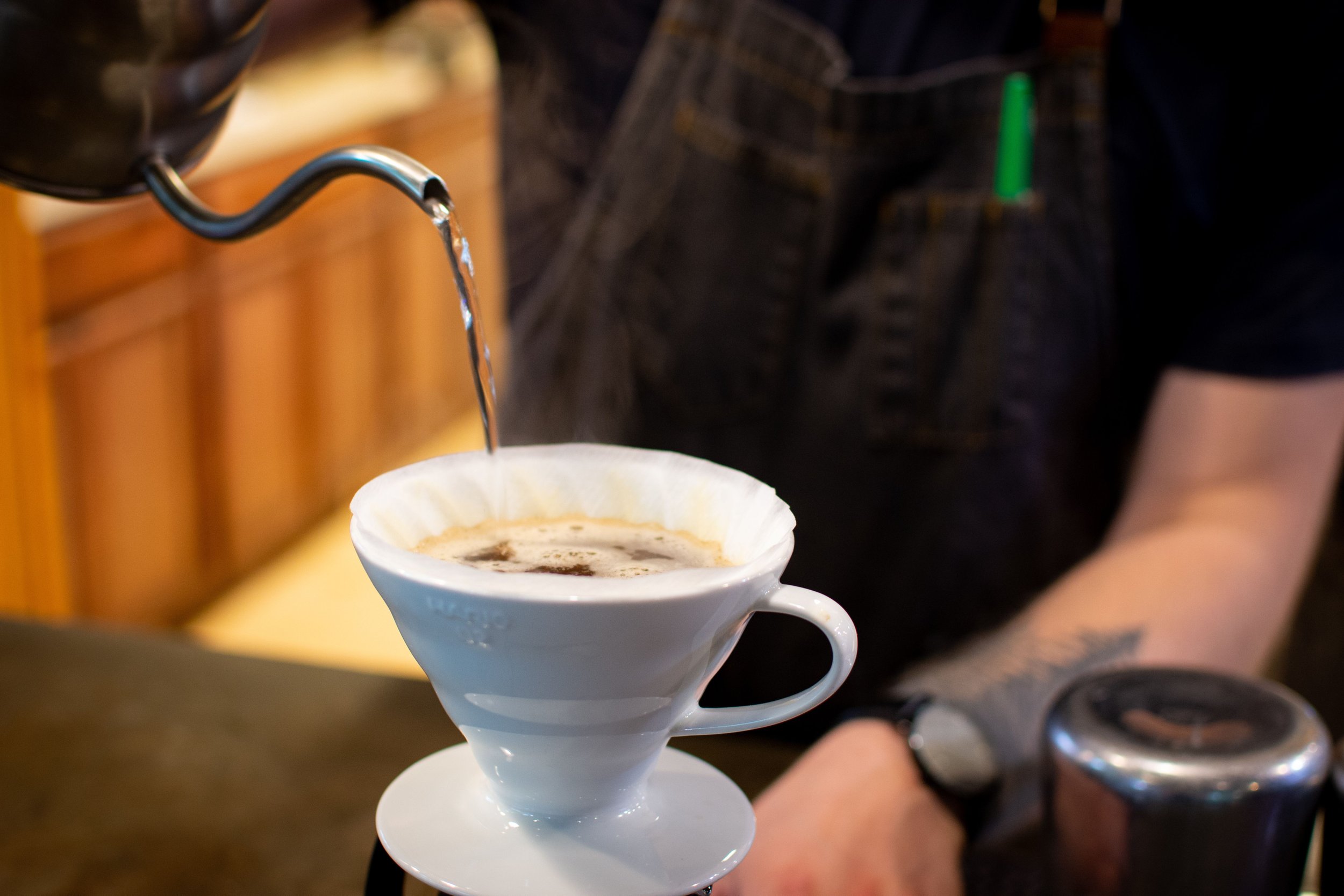Welcome to For the Love of Coffee! A weekly blog about all things coffee exclusively for the staff of Vienna Coffee.
Today we will be discussing the subject of coffee roasting. Roasting is both a science and an art. The myriad of chemical processes (science) that take place during the heating up and cooking of green coffee are the elements responsible for the flavors which result. However, it is the skill and experience of the roaster (art) which guides these changes. Factors such as “charge”, “drop temp”, “dry end”, “Maillard phase” “rate of rise”, “first crack” and “development phase” all come into play when roasting coffee. It is the Roasters themselves who have ultimate control over these elements and the timing and duration of each phase in the roasting process which determines the complex and astonishing flavors which result.
Here at Vienna Coffee Company, we purchase only the highest-quality Arabica green coffee (for an in-depth review see my previous blog post - Coffea Arabica - the unstoppable bean). Fresh, high-quality green coffee is essential for a skilled Roaster. In essence, it is the medium for the art they are going to create. Low-quality beans can never produce exceptional coffee, just as low-quality ingredients limit what a chef can accomplish. On the flip side, high-quality beans do not necessarily guarantee a high-quality result either. This is determined by the Roaster’s ability to bring out the unique character and flavors of each type of coffee.
Vienna Coffee founder John Clark roasting on the original “Red Roaster” which started it all.
Below is a very brief synopsis of the coffee roasting process.
Green coffee is weighed to a precise amount before being dropped into the heated coffee roasting drum. This coffee weight is called the “Charge” and the temperature of the roaster at the time of the drop is called the “Charge Temperature’.
For the first 1 - 2 minutes in the roaster, the coffee is absorbing the heat from the roaster (endothermic stage), and the roaster’s internal temperature drops. At the “Turning Point” the coffee and roaster temp equalize and the coffee begins to heat up.
For the next 5 - 8 minutes the coffee is in the “Drying Phase” when all the moisture in the green coffee begins to heat up and the coffee begins to lose its pale green color and begins to take on a soft yellow hue. This is called the “Dry End” point of the roast.
From this point, the coffee will enter the “Browning” or “Maillard Phase” when it begins changing from yellow to “cinnamon” color, to ever-darker shades of brown. It is during this time that many chemical reactions are taking place inside the coffee bean and steam and various gases are released. This is when it is important for the roaster to closely monitor the “Rate of Rise”, or the speed at which the coffee is heating up. Too quickly can result in a burnt, or under-developed tasting coffee. Too slow and it can result in a baked or flat-tasting coffee with little acidity or character.
When the coffee beans reach a temp of around 400 degrees the remaining water energy in the form of steam inside the coffee releases suddenly in an event called “First Crack”. This is an audible “popping” sound and it causes the coffee bean to expand, sometimes even doubling or more in size! At this stage, the coffee beans themselves begin to give off heat that they have been absorbing during the entire roast (exothermic stage). It is also at this point that the “Development Phase” begins.
The “Development Phase” is responsible for most of the flavors ultimately experienced in the cup. This is where sugars are caramelized, aromas are developing, acids are breaking down, and coffee oils are produced. Stopping the roast at the desired roast degree is critical to how the coffee will ultimately taste in the cup. Too light, and it can taste grainy and highly acidic (think unripe fruit), too dark and it can taste smoky and burnt. If the development phase continues on to reach a very dark roast stage there will be a “second crack” which occurs. Coffees roasted to second crack are very dark and bold with little acidity or original variatel charachteristics left. Finding the sweet spot for each type of coffee is the roasters ultimate goal.
The final phase of the coffee is the “Cooling Phase” when the coffee is released from the roaster into a cooling bin that stirs the coffee and blasts cool air through it to stop the roast. It is very important that the roast be stopped quickly because the beans will continue to cook themselves and ruin the profile if not cooled immediately.
Various stages of roast degree from green to dark roast (sometimes called Vienna Roast or the darker French Roast)
I hope that this gives you some basic insights into what goes into the roasting of green coffee. All employees are welcome and encouraged to visit the roastery and observe our Roast Master, Trace Johnson during roasting times to learn more about the process and see it all happening in real time! It is very enjoyable and satisfying to bring coffee from its original state as a tasteless, dense, and unpalatable green seed to the wondrous and endlessly fascinating product we know as COFFEE!!
It’s a GREAT day for Coffee!
~Matt~




















